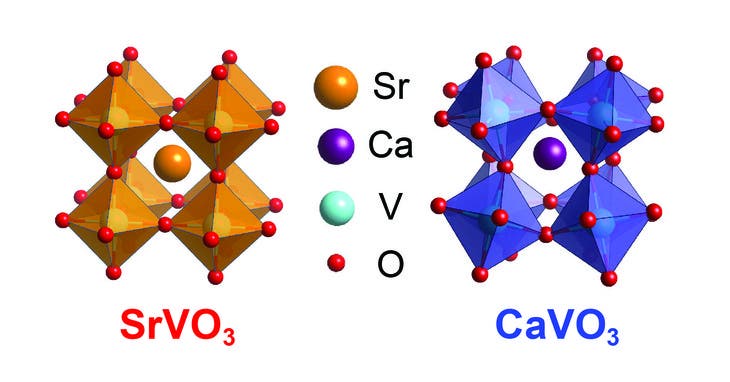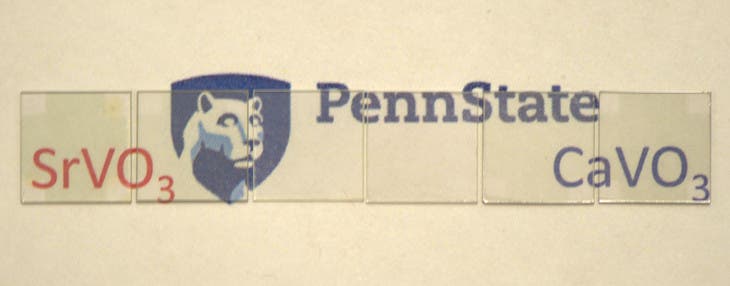Researchers have discovered a new material that’s both transparent and electrically conductive that might make smartphones, TVs, smart windows and solar cells a lot cheaper, and maybe even more efficient.
Most touch screens are made from a transparent metal called indium tin oxide (ITO). But while the cost of processors and memory in smartphones has gone down year after year, indium price hikes jumped the cost of touch screens with each generation. Today, for a medium-priced phone the cost of the touch screen makes up 40% of the production value.
Pennsylvania State University researchers led by Roman Engel-Herbert investigated various alternatives to indium compounds. Previously, little progress was made elsewhere by other groups who tried to replicate ITO’s seemingly perfect combination of optical transparency, electrical conductivity and ease of fabrication.
The researchers employed a different strategy, however, and worked with an uncoventional class of materials called correlated metals in which the electrons flow like a liquid. In most metals, like copper, gold, aluminum or silver, the electrons flow like a gas.
“We are trying to make metals transparent by changing the effective mass of their electrons,” Engel-Herbert said. “We are doing this by choosing materials in which the electrostatic interaction between negatively charged electrons is very large compared to their kinetic energy. As a result of this strong electron correlation effect, electrons ‘feel’ each other and behave like a liquid rather than a gas of non-interacting particles. This electron liquid is still highly conductive, but when you shine light on it, it becomes less reflective, thus much more transparent.”

A figure showing the crystal structure of strontium vanadate(orange) and calcium vanadate (blue). The red dots are oxygen atoms arranged in 8 octohedra surrounding a single strontium or calcium atom. Vanadium atoms can be seen inside each octahedron.
Image: Lei Zhang / Penn Stat
With the help of Professor Karin Rabe of Rutgers University, the researchers devised a mathematical model that rendered the optimal design for transparent conductors in the form of a correlated metal. Eventually, they manufactured 10nanometer thick films made from strontium vanadate and calcium vanadate. When tested, these “worked really well compared to ITO,” said Engel-Herbert.

Samples of the correlated metals strontium vanadate (two squares on left) and calcium vanadate (two squares on right) with two uncoated squares in center.
Image: Lei Zhang / Penn State
Indium is priced at $750/kg, while strontium vanadate and calcium vanadate sell for less than $25/kg each.
The researchers from Penn State have found a great alternative to ITO touch screens. It remains now to be seen whether these can be manufactured with the same ease. From what they gather at the moment, the researchers say “there is no reason that strontium vanadate could not replace ITO in the same equipment currently used in industry.” If so, then smartphones could be made really, really cheap. Same goes for any device that requires a touchscreen display.
Engel-Herbert says their exotic transparent metals could also be used in solar cells. Since 2009, a new type of solar cells made from perovskite — a mineral able to transport solar energy and convert it into electricity — has been catching everybody’s eyes in the industry. In only a couple years of research, the rated efficiency of such solar cells has soared from 3.8% to 19.3%, a pace of improvement unmatched by any other solar technology.Strontium vanadate, also a perovskite, has a compatible structure that makes this an interesting possibility for future inexpensive, high-efficiency solar cells.
Findings appeared in Nature.










